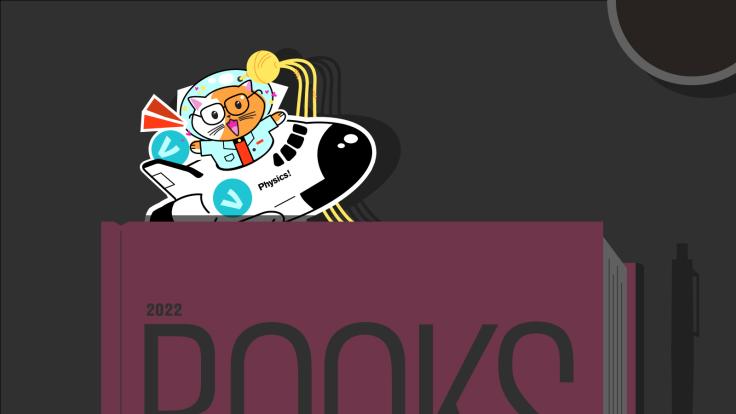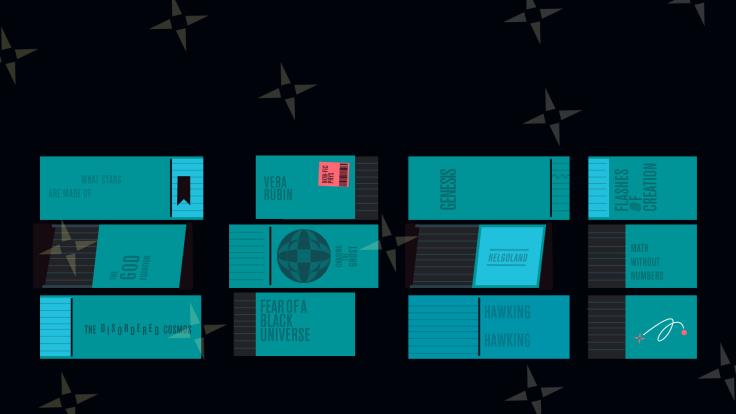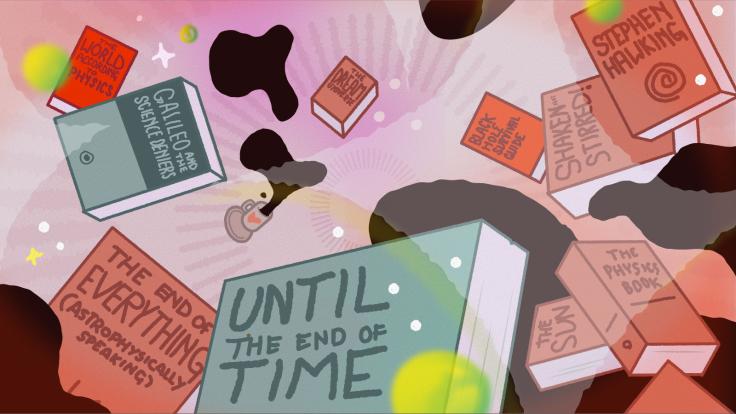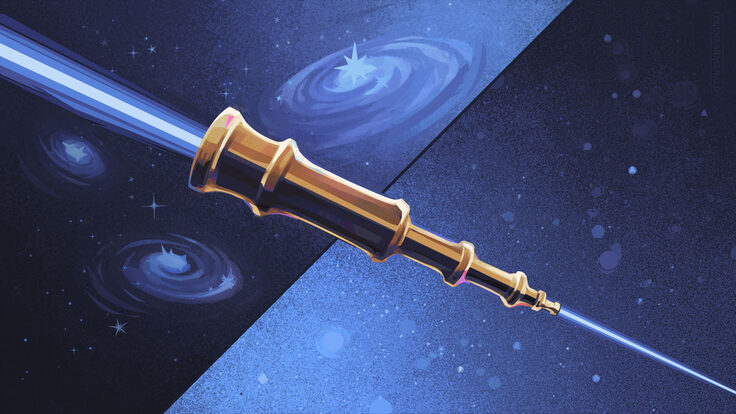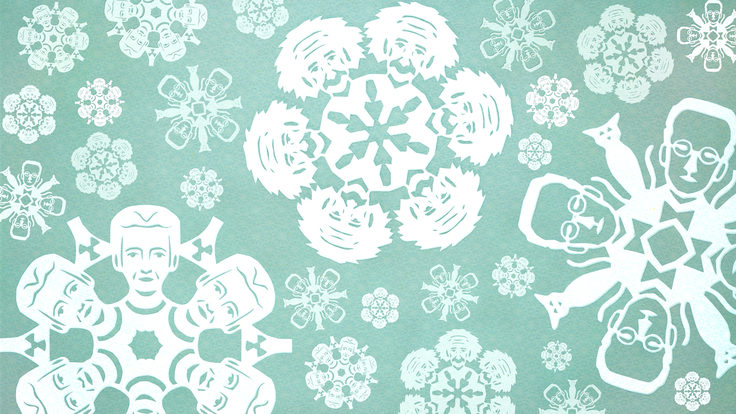The array of particle physics and astrophysics books Symmetry readers might have encountered in 2018 ranges from the philosophical to the whimsical.
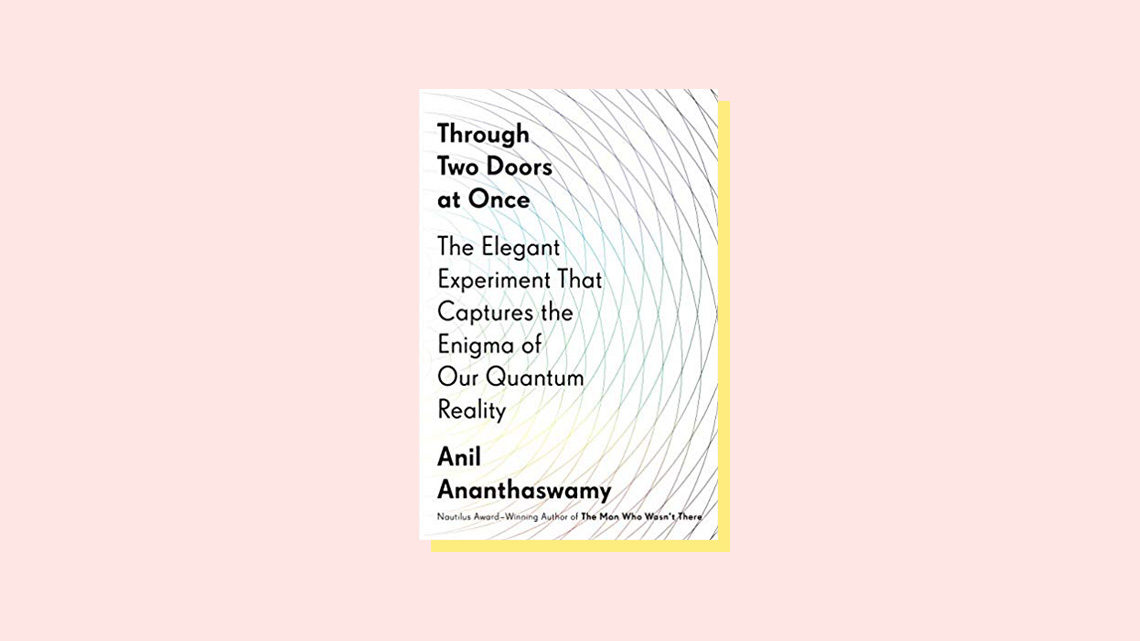
Through Two Doors at Once: The Elegant Experiment That Captures the Enigma of Our Quantum Reality, by Anil Ananthaswamy
Is light a wave or a particle? Yes. No. Maybe. Isaac Newton posited that light came in discrete “corpuscles.” In 1803, Thomas Young’s double slit experiment refuted Newton, demonstrating the dual nature of light, able to act as both a particle and a wave. One hundred years later, quantum mechanics again threw reality up for grabs. Ananthaswamy (The Edge of Physics, The Man Who Wasn’t There) deftly describes the science and history of a simple experiment that perplexes physicists to this day.
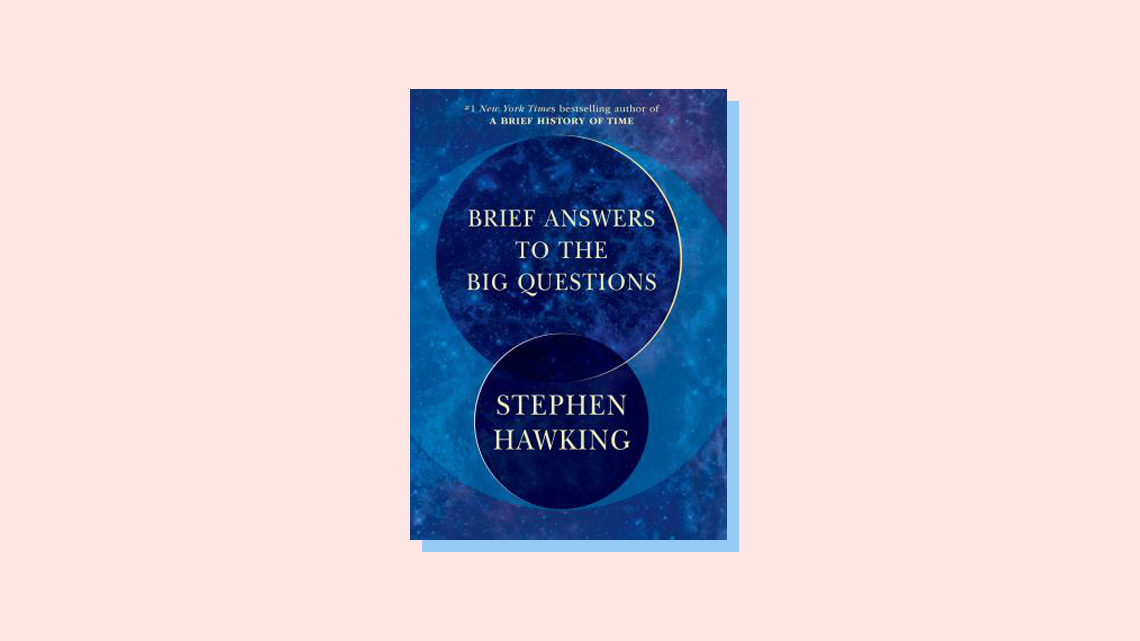
Brief Answers to the Big Questions, by Stephen Hawking
For those trying to comprehend the mind of the late physicist Stephen Hawking (A Brief History of Time, etc.), this final work offers a remarkably accessible and humorous guide to his thinking on the nature and future of human existence. He asks, “Is there a God?” and that’s just the beginning.
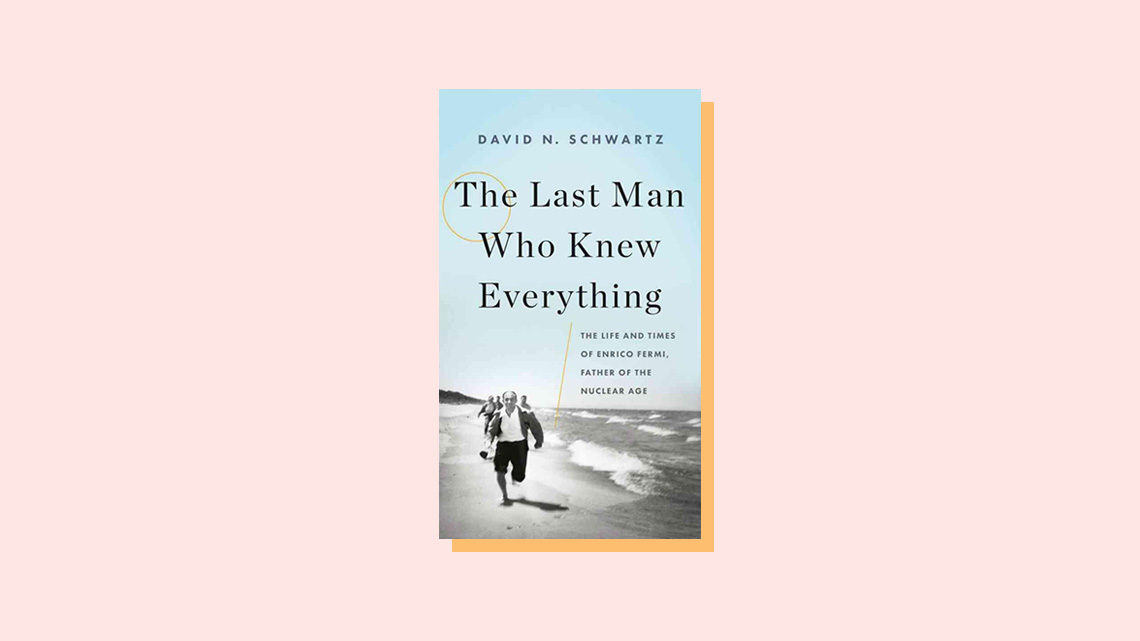
The Last Man Who Knew Everything: The Life and Times of Enrico Fermi, The Father of the Nuclear Age, by David N. Schwartz
Physicist Enrico Fermi, known as the “architect of the nuclear age,” left behind virtually no clues about his inner life. David. N. Schwartz holds a lens to Fermi’s early life and the loss at age 13 of his idolized older brother, Giulio, in a quest to understand Fermi’s development as an unmatched scientist and teacher but detached family man. Schwartz has worked in national security and defense policy for the State Department and the Brookings Institution. His father, Melvin Schwartz, shared the 1988 Nobel Prize with Mel Steinberger and Leon Lederman for discovering the muon neutrino.
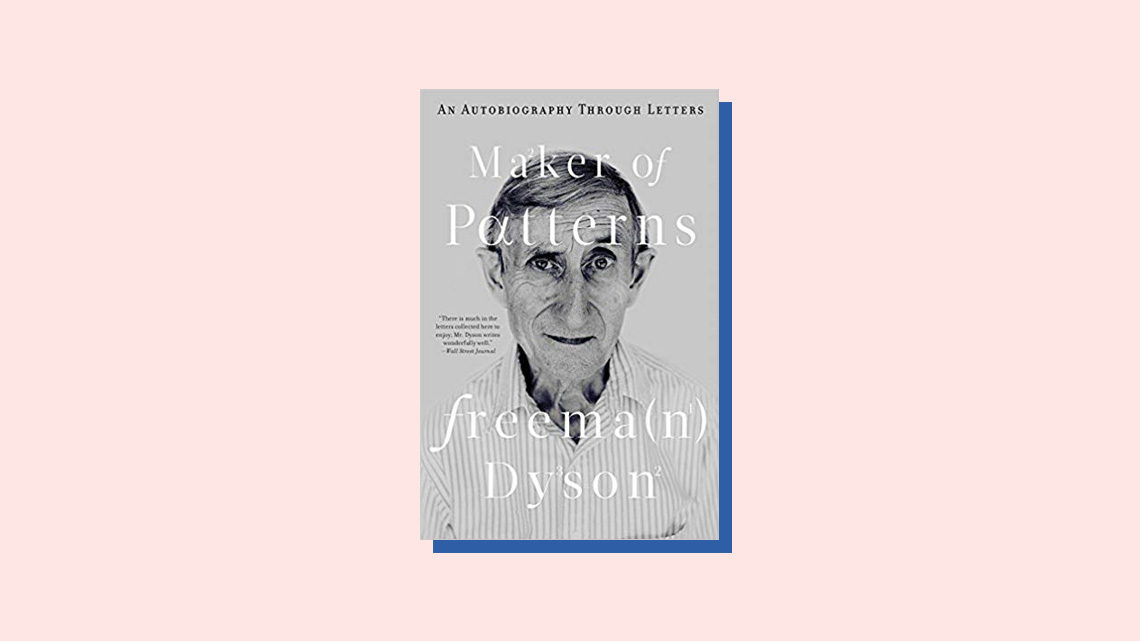
Maker of Patterns: An Autobiography Through Letters, by Freeman Dyson
In contrast to Fermi, 94-year-old physicist and mathematician Freeman Dyson has thoroughly documented his life in hundreds of letters written to his family. He begins this collection in 1941, when he was 17, at Trinity College, Cambridge. Over the years, 20th century icons from physicist Richard Feynman to Martin Luther King, Jr., appear in his life. Dyson has claimed “the letters record the daily life of an ordinary scientist doing ordinary work,” but when that work spans quantum electrodynamics, astronomy, nuclear engineering, disarmament and beyond, it seems the adjective “extraordinary” is more apt.
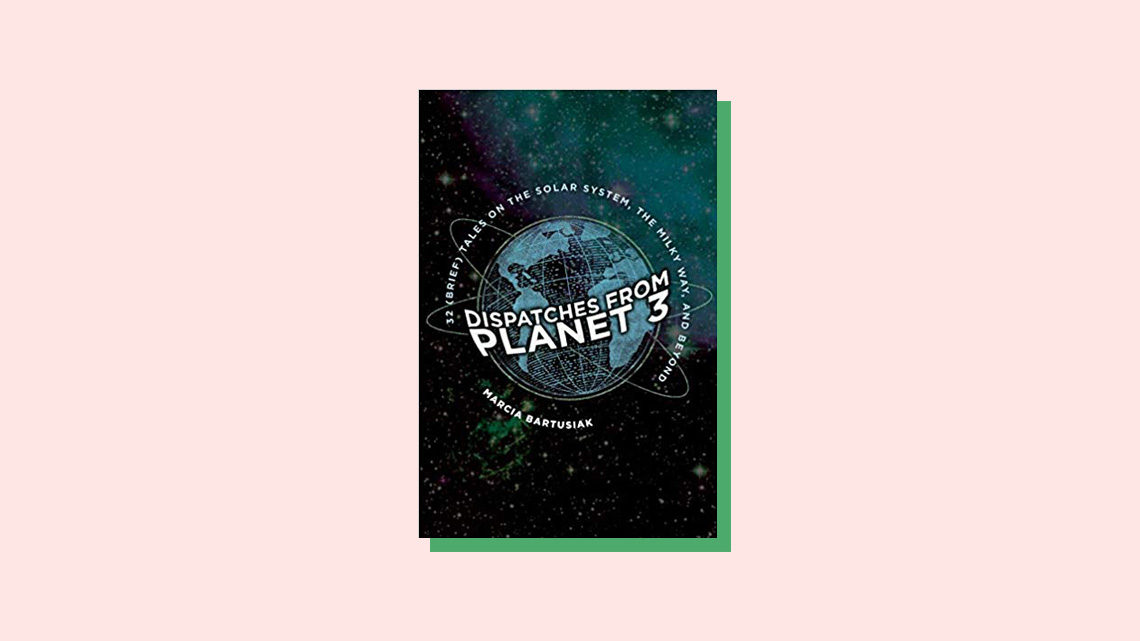
Dispatches From Planet 3 – Thirty-two (Brief) Tales on the Solar System, The Milky Way, and Beyond, by Marcia Bartusiak
Award-winning science writer Marcia Bartusiak (Einstein’s Unfinished Symphony, The Day We Found the Universe, etc.) describes this collection of essays as “starting with our solar system and working outward in space-time to the Big Bang—and beyond.” She notes her pleasant surprise at how many women she has portrayed over three decades of writing, including Vera Rubin, Henrietta Leavitt, Beatrice Tinsley, Jocelyn Burnell and others who have made critical yet often overlooked contributions to cosmology.
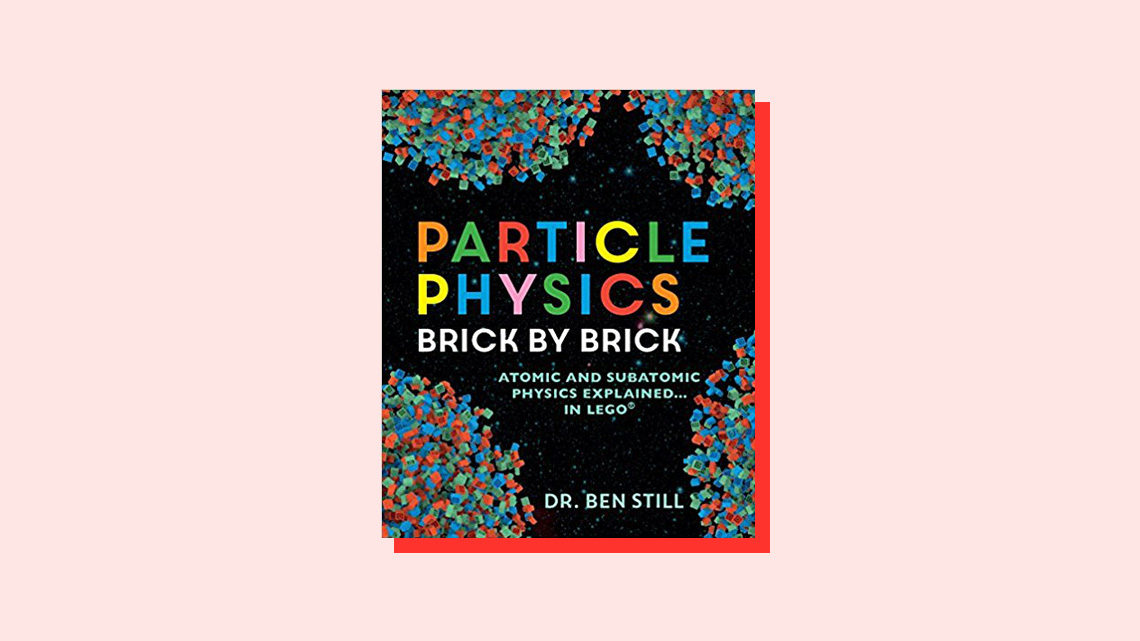
Particle Physics Brick by Brick: Atomic and Subatomic Physics Explained...in LEGO, by Dr. Ben Still
The particles and forces of the Standard Model of particle physics are often described as the “building blocks of the matter,” so what better way to explain them than by using actual building blocks? In this quirky book, particle physicist Ben Still (The Secret Life of the Periodic Table) illustrates the properties and interactions of leptons, quarks and other particles with colored Lego bricks—which he then uses to explain the workings of the universe.
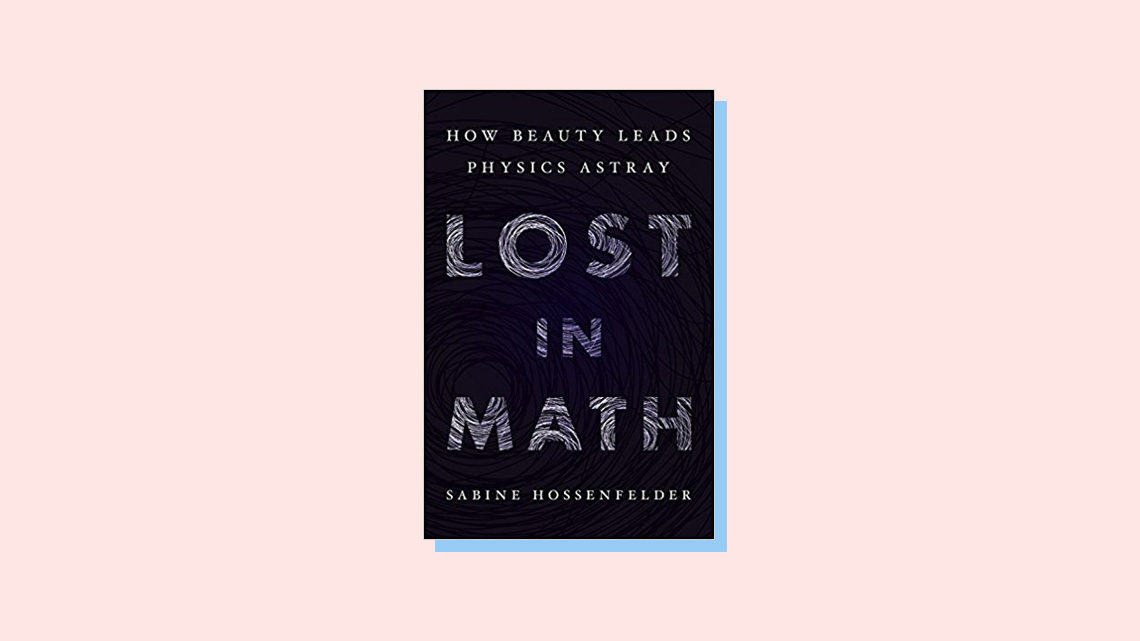
Lost in Math: How Beauty Leads Physics Astray, by Sabine Hossenfelder
Are physicists letting the perfect get in the way of the good? Sabine Hossenfelder, a research fellow at the Frankfurt Institute for Advanced Studies and writer of the popular physics blog Backreaction, thinks so. In this book, she writes that the pursuit of beauty and elegance—in the form of theories like Supersymmetry—may be leading the field into roadblocks in the experimental realm.
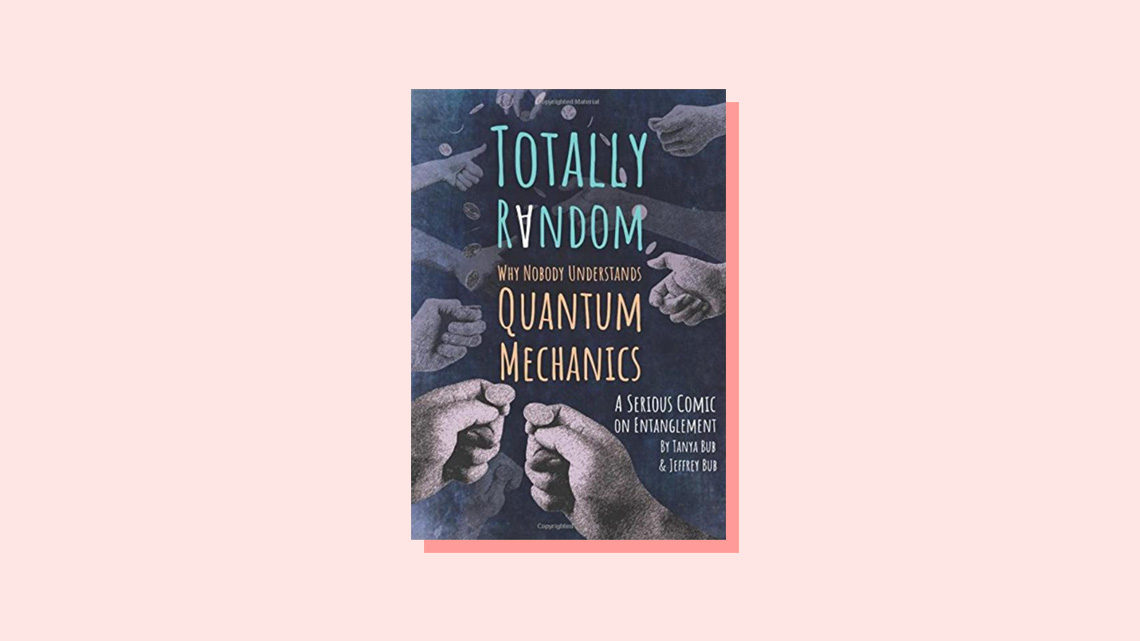
Totally Random: Why Nobody Understands Quantum Mechanics (A Serious Comic on Entanglement), by Tanya Bub and Jeffrey Bub
Take this comic book seriously. It was co-written by Jeffrey Bub, father and Distinguished University Professor at the University of Maryland, who since 1974 has written more than 100 journal articles and three books on quantum mechanics (Banana World: Quantum Physics for Primates; Interpreting the Quantum World; Interpretation of Quantum Mechanics). Daughter and co-writer Tanya Bub is the one to thank for the book’s whimsical illustrations.
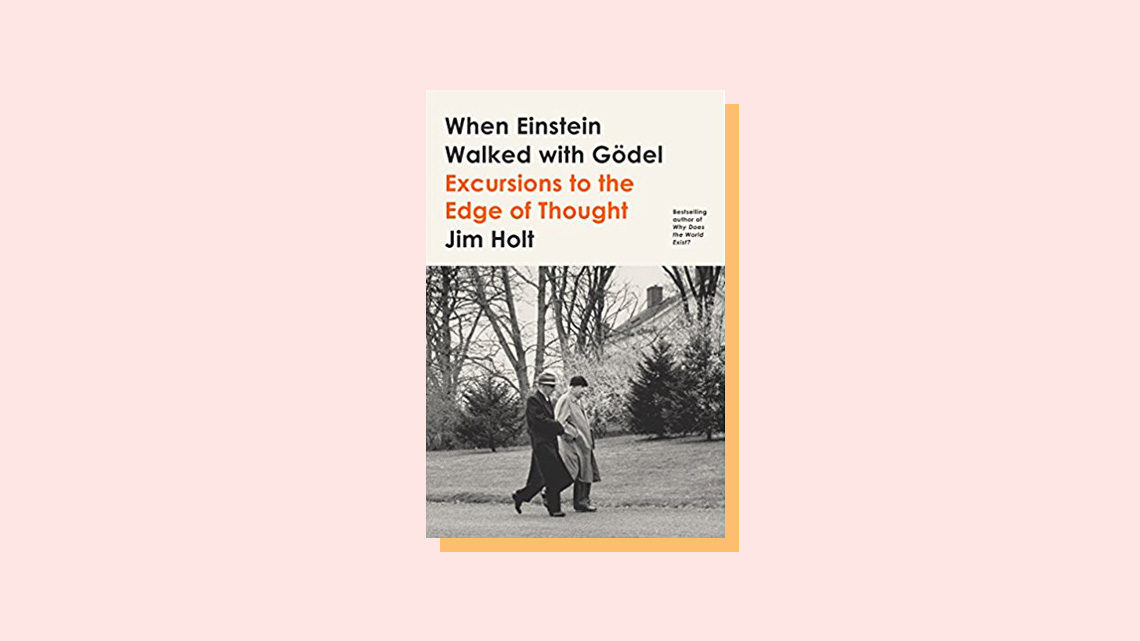
When Einstein Walked with Gödel: Excursions to the Edge of Thought, by Jim Holt
Albert Einstein’s theories of general and special relativity overturned our sense of reality in the physical world, and mathematician and logician Kurt Gödel “had a similarly subversive effect on our understanding of the abstract world of mathematics.” That’s what Jim Holt (Why Does the World Exist?) writes in this collection of essays about a variety of great thoughts and thinkers, which starts out with an exploration of Einstein and Gödel’s frequent discussions during walks together at Princeton’s Institute for Advanced Study in the 1940s.
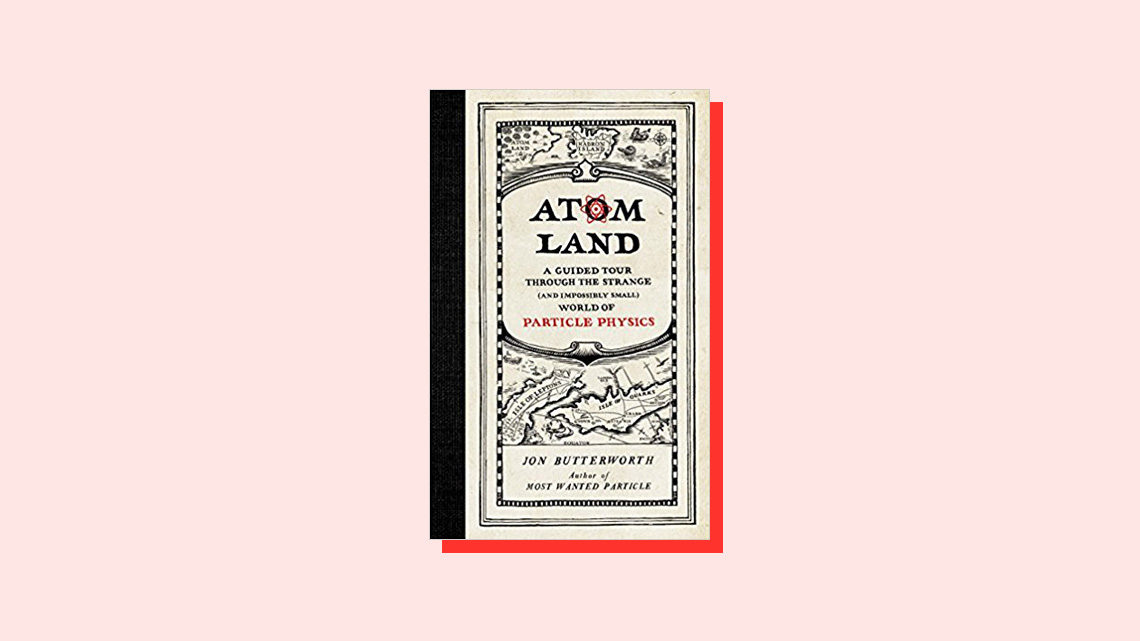
Atom Land: A Guided Tour Through the Strange (And Impossibly Small) World of Particle Physics, by Jon Butterworth
ATLAS experiment physicist, professor of physics and astronomy at University College London, and former Guardian columnist Jon Butterworth (Most Wanted Particle) warns: “Allegory and analogy can help understanding, but are misleading if pushed too far.” Nevertheless, in this book he takes the reader on a journey from Port Electron on the Isle of Leptons to the Isle of Quarks, through Bosonia to the Higgs Equator, into the sea of Antimatter in search of a greater understanding of particle physics. “Enjoy yourself,” he says, “but tread with care.”
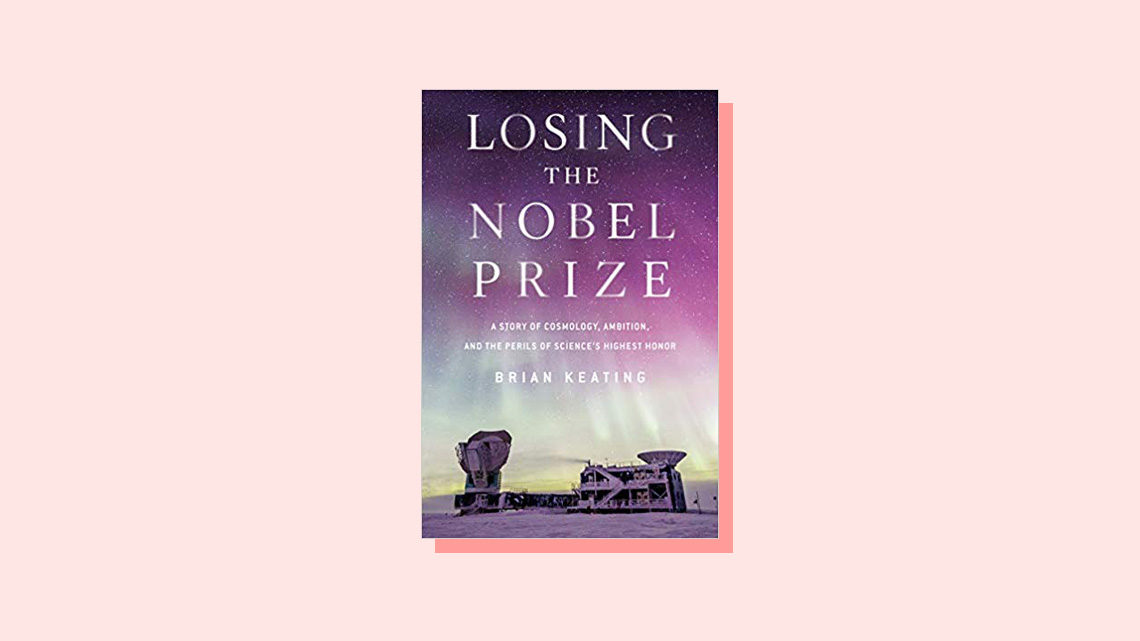
Losing the Nobel Prize: A Story of Cosmology, Ambition, and the Perils of Science’s Highest Honor, by Brian Keating
Winning a Nobel Prize is a matter of interest to many scientists. But with this book Brian Keating offers a guide, based on personal experience, on how to lose one. Keating takes the reader into the buzz and bust of a dried up discovery, explaining the science behind the BICEP2 experiment’s search for evidence of cosmic inflation, and exploring the effect of the Nobel on science in general.
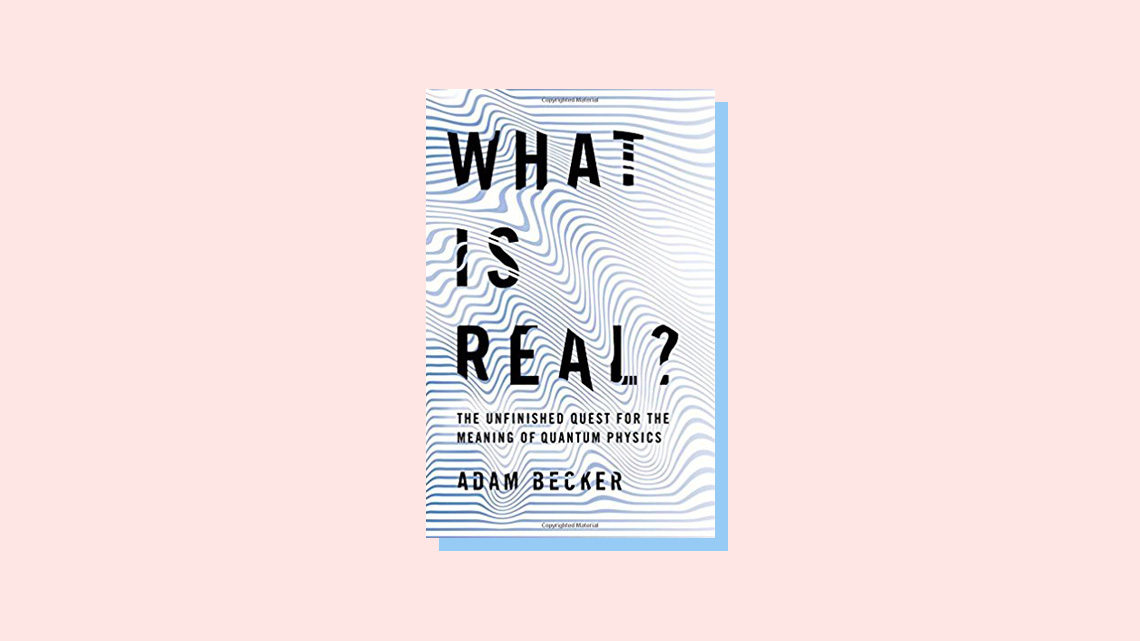
What is Real? The Unfinished Quest for the Meaning of Quantum Physics, by Adam Becker
Astrophysicist Adam Becker—whose work for the public includes not just writing, but also a series of animations created with the BBC and multiple episodes of the podcast “Story Collider”—provocatively explores the history of quantum physics and the continuing debate over what it tells us about the nature of reality.
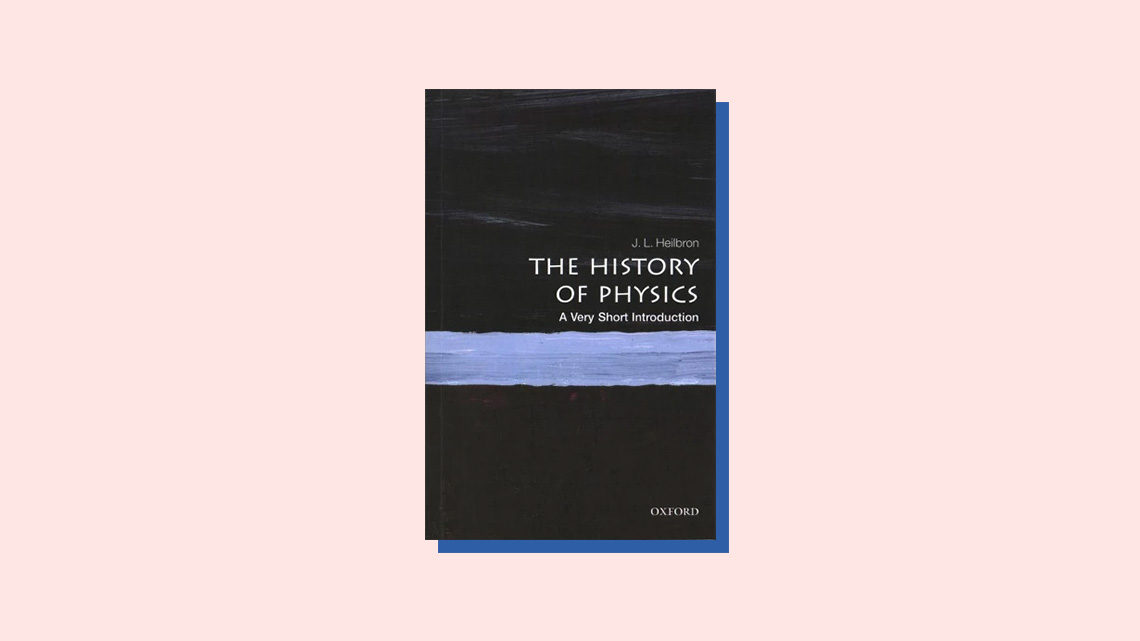
The History of Physics: A Very Short Introduction, by J.L. Heilbron
In 149 pages lightened with subtle humor, J.L. Heilbron traces a conceptual line from Aristotle’s philosophy-based physica to the quest for a Theory of Everything. Throughout, Heilbron celebrates new paradigms: Kepler, he writes, “freed the planets from their 2000-year crystalline imprisonment” by plotting their solar orbits. A renowned historian of physics and astronomy, Heilbron (Galileo; Love, Literature and the Quantum Atom) was most recently Senior Research Fellow at Worcester College, Oxford.




